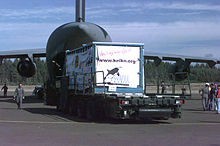
The Houston Zoo is a 55-acre (22 ha) zoological park located within Hermann Park in Houston, Texas, United States. The zoo houses over 6,000 animals from more than 900 species. It receives around 2 million visitors each year and is the second most visited zoo in the United States, surpassed only by the San Diego Zoo. It is accredited by the Association of Zoos and Aquariums (AZA).
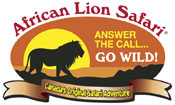
African Lion Safari is a family-owned safari park in Southern Ontario, Canada, located between the cities of Hamilton and Cambridge, located 100 kilometres (62 mi) west of Toronto. Guests may tour seven game reserves, with a total area of about 740 acres, on tour buses or in visitors' own vehicles, where animals roam freely in contained areas. Accompanying the game reserves is a walking section where exotic birds and primates, as well as the park's herd of Asian elephants, are on display.

The Cheyenne Mountain Zoo is a zoological park located southwest of downtown Colorado Springs, Colorado, on Cheyenne Mountain in the United States. At an elevation of 6,714 feet (2,046 m) above sea level, it is the highest zoo in the country. The zoo covers 140 acres (57 ha), 40 of which are in use. The zoo houses more than 750 animals, representing nearly 170 different species, with more than 30 endangered species. The zoo was ranked the #4 best zoo in North America in 2018 by USA Today. It is accredited by the Association of Zoos and Aquariums.
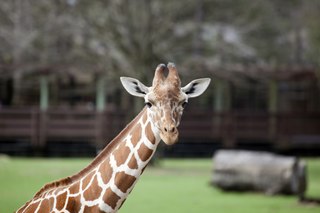
Montgomery Zoo is a 40-acre (16 ha) zoo located on the north side of Montgomery, Alabama. The zoo is an independent city department, and is supported in part by The Montgomery Area Zoological Society. It is home to approximately 750 animals representing 140 species. After not renewing their Association of Zoos and Aquariums membership in 2013, the zoo opted to remain accredited solely by the Zoological Association of America. The Mann Wildlife Learning Museum opened in January 2003 and serves as the administration building. The museum features taxidermy displays with a focus on native wildlife, game species, and wildlife management.

The Ueno Zoo is a 14.3-hectare (35-acre) zoo, managed by the Tokyo Metropolitan Government, and located in Taitō, Tokyo, Japan. It is Japan's oldest zoo, opened on March 20, 1882. It is served by Ueno Station, Keisei Ueno Station and Nezu Station, with convenient access from several public transportation networks. The Ueno Zoo Monorail, the first monorail in the country, connected the eastern and western parts of the grounds, however the line was suspended from 2019 onwards due to ageing infrastructure until being announced as closing permanently on 27 December 2023.

Copenhagen Zoo is a zoological garden in Copenhagen, Denmark. Founded in 1859, it is one of the oldest zoos in Europe and is a member of EAZA. It comprises 11 hectares and is located in the municipality of Frederiksberg, sandwiched between the parks of Frederiksberg Gardens and Søndermarken. With 1,571,331 visitors in 2019 it is the most visited zoo and one of the most visited attractions in Denmark. The zoo is noted for its new Elephant House designed by British architect Sir Norman Foster. The zoo maintains and promotes a number of European breeding programmes.

Blackpool Zoo is a 32-acre (13 ha) zoo, owned by Parques Reunidos and located in the sea-side resort of Blackpool, Lancashire, England. It cares for over 1,000 animals from all over the world.

The Zoo Zurich is a zoo located in Zurich, Switzerland. It is considered one of the best zoos in Europe. Opened in 1929, it is the third oldest zoo in Switzerland and it accumulated a collection of 2,200 specimens of 300 species by its seventy-fifth year. It is located on Zürichbergstrasse, on the lower reaches of the Zürichberg in the Fluntern quarter.
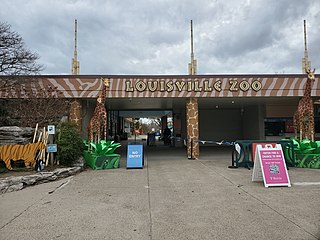
The Louisville Zoological Gardens, commonly known as the Louisville Zoo, is a 134-acre (54 ha) zoo in Louisville, Kentucky, situated in the city's Poplar Level neighborhood. Founded in 1969, the "State Zoo of Kentucky" currently exhibits over 1,200 animals in naturalistic and mixed animal settings representing both geographical areas and biomes or habitats.
The Born Free Foundation is an international wildlife charity that campaigns to "Keep Wildlife in the Wild". It protects wild animals in their natural habitat, campaigns against the keeping of wild animals in captivity and rescues wild animals in need. It also promotes compassionate conservation, which takes into account the welfare of individual animals in conservation initiatives. Born Free also creates and provides educational materials and activities that reflect the charity's values.

Paignton Zoo is a zoo in Paignton, Devon, England. The zoo was started as a private collection by avid animal collector and breeder, Herbert Whitley, in the grounds of his home Primley House. It was opened to the public on a number of occasions, originally as Primley Zoological Gardens, and closed twice due to disputes with the tax authorities. The commercialisation of the zoo came when animals and attractions were relocated from Chessington Zoo during World War II, and the site was named as Devon's Zoo and Circus
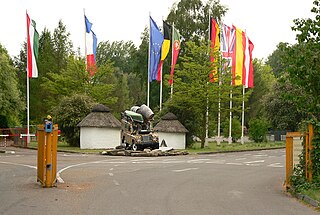
The Serengeti-Park in Hodenhagen, Lower Saxony, is a zoo and leisure park in North Germany.

Africam Safari is a Mexican safari park that was established in 1972 by Captain Carlos Camacho Espíritu. It is about 17 kilometres from the city of Puebla, Mexico.
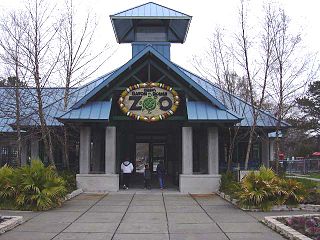
The Baton Rouge Zoo is located 15 minutes north of downtown Baton Rouge, Louisiana, United States. The zoo is owned and operated by the Recreation and Park Commission of East Baton Rouge Parish, Louisiana (BREC), and is home to over 800 animals from around the world. The zoo was first accredited by the Association of Zoos and Aquariums (AZA) in 1977 — the first zoo in Louisiana to be accredited. The zoo lost its accreditation in March 2018 due to infrastructure issues and animal escapes, but regained it in 2024

Knie's Kinderzoo is a zoo aimed for children. It is located in the Swiss municipality of Rapperswil.

Barcelona Zoo is a zoo in the Parc de la Ciutadella in Barcelona, Catalonia, Spain. The zoo used to be internationally known as the home of Snowflake, the only known albino gorilla, who died in 2003.

Dresden Zoo, or Zoo Dresden, is a zoo in the city of Dresden, Germany. It was opened in 1861, making it Germany's fourth oldest zoo. It was originally designed by Peter Joseph Lenné.

The Nyíregyházi Zoo, also known as Sóstó Zoo, is a 30-hectare zoo located 5km north of Nyíregyháza, Hungary. The zoo is in the Sóstó recreation area, which includes a beach, spa, public swimming pool, open-air museum, and a forested oak tree park and accommodations for visitors.
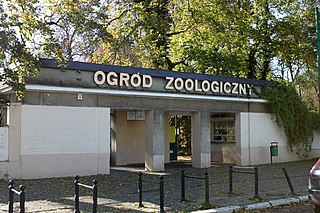
The Poznań Old Zoo is one of the oldest zoological gardens in Poland, located in the city of Poznań, Greater Poland Voivodeship. It was founded in 1874 and was included on the register of objects of cultural heritage in 1978 as a unique example of a vivarium. The zoo started as a few animals kept by a restaurant owner in the early 1870s. It can thus be considered the oldest continuously operating Polish zoological garden. Together with the New Zoo in Poznań, which opened in 1974, it forms an integral part of the whole complex known as The Zoological Garden in Poznań.

Osnabrück Zoo, also known as Zoo Osnabrück, is a zoo located in south Osnabrück at the hillside of Schölerberg in Osnabrück, Germany. It was founded under the name "Heimattiergarten", and opened during the summer of 1936. Almost 3000 animals from roughly 300 species can be seen on the 23.5 ha (0.235 km2) land. It is famous for housing the Grolar Bear. This brought about many scientific inquiries into the zoo.





